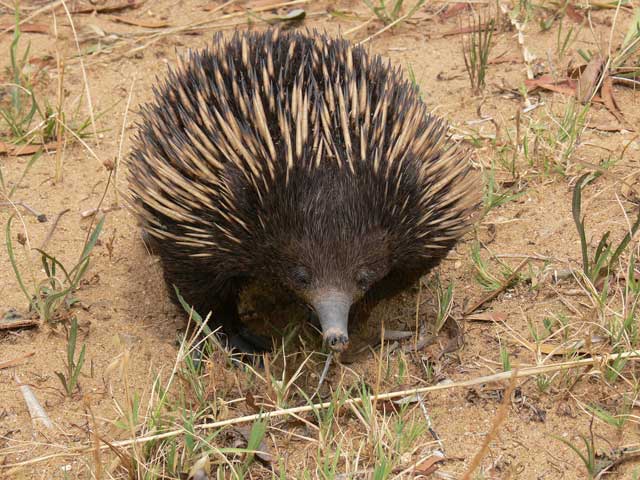Where the weird things are: Antipodean marvel with spiky ways

Your support helps us to tell the story
From reproductive rights to climate change to Big Tech, The Independent is on the ground when the story is developing. Whether it's investigating the financials of Elon Musk's pro-Trump PAC or producing our latest documentary, 'The A Word', which shines a light on the American women fighting for reproductive rights, we know how important it is to parse out the facts from the messaging.
At such a critical moment in US history, we need reporters on the ground. Your donation allows us to keep sending journalists to speak to both sides of the story.
The Independent is trusted by Americans across the entire political spectrum. And unlike many other quality news outlets, we choose not to lock Americans out of our reporting and analysis with paywalls. We believe quality journalism should be available to everyone, paid for by those who can afford it.
Your support makes all the difference.It's primary school stuff: mammals give birth to babies; birds lay eggs. Except that this particular mammal – also known as the spiny anteater – lays a big, rubbery whopper. Clearly it had its head in an ant hill when the rules were read out. Or perhaps, like many Australian creatures, it was simply being perverse.
Either way, few mammals are odder than an echidna. And it looks weird, too, like an outsized hedgehog with the snout of a clanger.
An aboriginal myth explains the spines: the echidna came into being, apparently, after hunters threw spears into a wombat. Simple. Early scientists, however, were more puzzled by the egg.
It turns out that the echidna is a monotreme, which means "single hole" in Ancient Greek and refers to its bird-like cloaca – a shared orifice for the urinary and excretory tract that is unique to this ancient Australasian order. And monotremes – which also include the equally puzzling platypus –are the world's only egg-laying mammals.
The egg in question hatches after 10 days to produce a tiny, 1.5cm-long baby. This infant is nourished on milk that seeps out on to the mother's under-fur, monotremes having – you guessed it – no nipples.
And there's more weirdness: a darting tongue that winkles termites from rotten wood; legs that stick out sideways like a lizard's; and a body temperature that can fall to 31C – lethally low for any normal mammal.
This is the most common of three echidna species. It is found across Australia, generally in dry, open country with abundant termites. Though largely nocturnal in warmer areas, you might see one by day in the cooler conditions of South Australia or Tasmania. Get too close, though, and it will roll into a spiny ball – or disappear into the ground like a sinking ship, leaving only its spines visible.
* Seek out echidnas – as well as kangaroos, koalas and other Australian specials – on Kangaroo Island in South Australia with Austravel (0800 988 4834; austravel.com) from £1,195. The price includes return flights with Qantas from Heathrow via Singapore to Adelaide, two nights in Adelaide, and three days' self-drive tour of Kangaroo Island with two nights' accommodation, car hire and Seacat transfers. Wildlife guides can be hired separately. Based on June departure.
Mike Unwin is the author of 100 Bizarre Animals, published by Bradt Travel Guides (£16.99). Readers of The Independent can buy the book for only £11.50 including UK p&p at bradt-guides.com. Enter coupon code "mudskipper" at the checkout.
Join our commenting forum
Join thought-provoking conversations, follow other Independent readers and see their replies
Comments